-
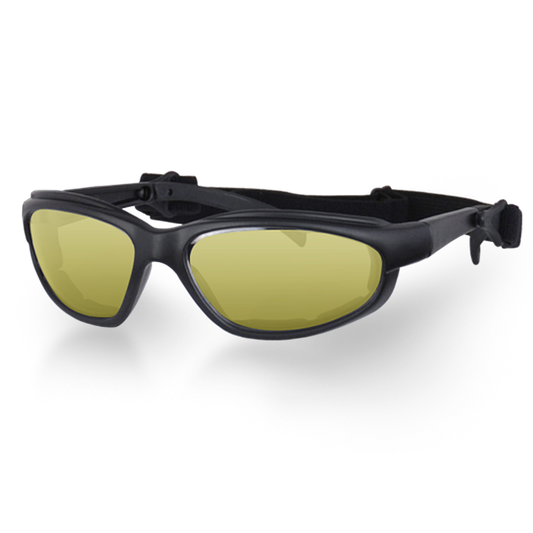
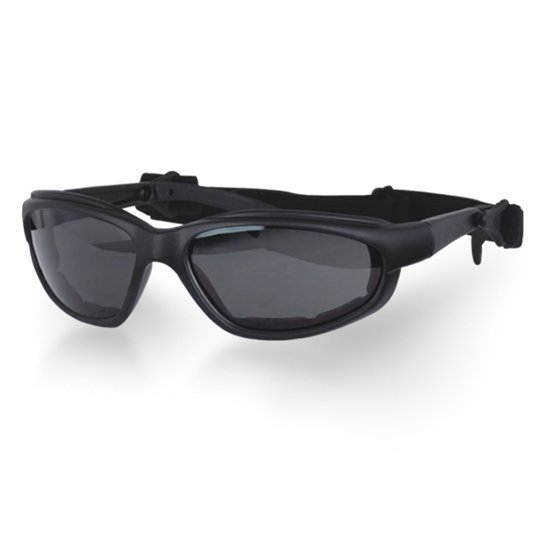 SAVE 44%
SAVE 44%Superbiker Convertible Goggles
Regular price From $47.45Regular price From $47.45 Sale priceUnit price per$84.9544% -

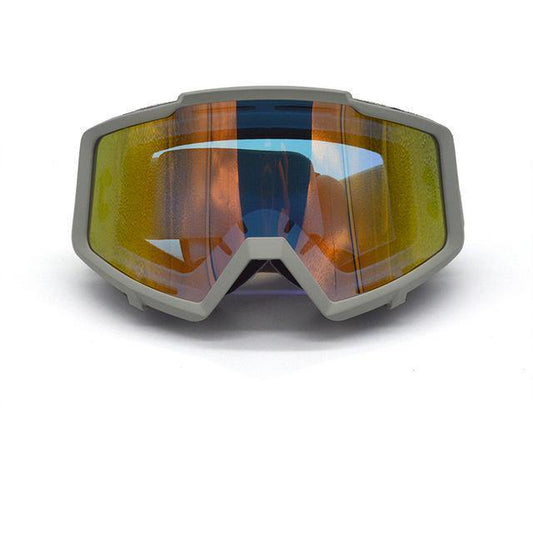 SAVE 50%
SAVE 50%Colorful Vintage Goggles
Regular price $32.95Regular price $32.95 Sale priceUnit price per$65.9550% -
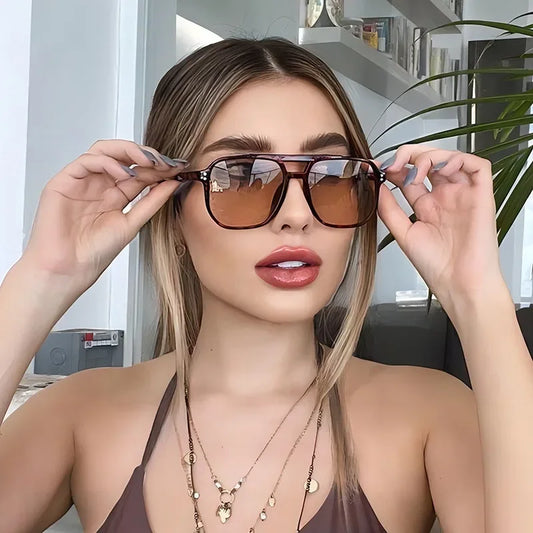
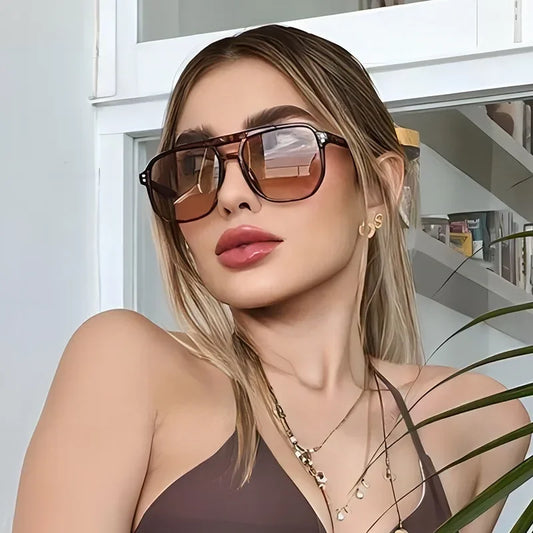 SAVE 29%
SAVE 29%ALR™ Vintage Square Sunglasses
Regular price $24.45Regular price $24.45 Sale priceUnit price per$34.4529%
Choosing the Best Motorcycle Goggles 2023
Choosing your next pair of motorcycle goggles could be the difference between a fulfilling and safe ride and where your eyes are exposed to all manner of ocular problems.
A sturdy pair of motorcycle goggles will protect your eyes from dust, dirt, and eye dryness. Experienced motorcycle riders understand the importance of having the best motorcycle goggles that tick all the boxes when it comes to safety, comfort, and style. Since not all motorcycle goggles are made equal— some are better suited for lighter weather conditions and others pretty much all weather conditions—it is vital to choose eyewear that will serve you when you need them the most. When compiling the list of the best motorcycle goggles in 2020, we had to look at several key features that make the best riding goggles stand out from the rest. These key features are explained below.
- Anti-fog/UV coating - whether you are riding in the rain, or cruising in the chilling snow, motorcycle goggles should have what it takes to withstand these extreme conditions. Unfortunately, regular riding sunglasses will not provide you with the crucial anti-fogging function that is so useful under certain conditions when visibility is limited. When it fogs up, visibility is greatly reduced and you are more likely to get involved in a crash. The best motorcycle goggles usually come ready with an anti-fog coating for enhanced visibility.
- Ventilation - airflow is very important when riding your motorcycle and will help to keep you cool and fresh at all times. When shopping for motorcycle goggles, you cannot afford to overlook the ventilation features that come with a particular type of goggles. Good ventilation is key for comfort and even safety on the road as it helps keep you cool and focused. If you choose goggles that cover a large portion of your face, then ventilation is a must.
- Lens quality - when designing a goggle lens, manufacturers have more than a few material options to choose from including polycarbonate and trivex. Polycarbonate lenses are known to be shatterproof and resistant to scratches and can be obtained quite cheaply. Trivex is also an excellent lens material that is both shatterproof and scratch-resistant while also providing slightly better lens clarity compared to other materials. Ideally, go for either one of these types of lens material and you will be safe on the road.
- UV protection - a key feature of any motorcycle goggles should be 100% protection from ultraviolet light. The harmful effects of UV light include impaired vision, macular degeneration, and cataracts which reduce your vision over time. Ensure that the motorcycle goggles have UV protection as one of the key features.
- Antiglare coating -we all love to ride on bright sunny days but the perils on the road cannot be ignored. Motorcyclists have to contend with a myriad of reflections from many surfaces around them including puddles, hoods of vehicles, and other flat surfaces. For many, this can be a distraction that affects visibility and puts them in jeopardy. For this reason, polarized lenses are useful for blocking the excess light and glare to give you a smooth riding experience.
- ANSI approval- with so many goggles in the market today, stricter measures have been put in place to ensure only the most protective eyewear can reach the consumer. Most states call for motorcyclists to wear motorcycle goggles or riding glasses with quality certification. The ANSI (American National Standards Institute) assigns ratings to different riding goggles based on a thorough quality test that ensures only the best protection.
Other factors to look out for include transition lenses, which can be used interchangeably depending on the lighting conditions, comfort, and style. Keeping this in mind, you will be able to pick out a pair of motorcycle riding goggles that meet your expectations.
Motorcycle Goggles Over Glasses
Sometimes, your prescription glasses may come in the way when you are trying to put on your motorcycle goggles. And this can be quite a challenge especially if you have eyesight problems. Some people can’t just wear contact lenses for various reasons, and the only option they have left is to wear prescription glasses. These glasses are not the kind you would wear for outdoor activities like swimming much less for motorcycling. It is for this reason that you will need over the glasses motorcycle goggles. Motorcycle goggles over glasses will protect the lens and frame of your prescription eyewear and give you the confidence to enjoy outdoor activities.
Which are the best motorcycle goggles for rain?
Motorcycle goggles are designed to protect your eyes from elements such as wind and rain. But not all goggles are reliable when it comes to preventing rain from dripping into your eyes. While a full-face helmet fixes the rain problem for the most part, some riders simply like to ride with the visor down for fresh air. If you are looking for some great rain goggles, consider ones that are totally sealed with ample foam padding. This is great for keeping water out while fitting snugly around your face. Foam-sealed goggles will do a great job to keep out raindrops and prevent fog from forming on the inside. Some have vents that prevent misty fog and allow air flow to your eyes. The vintage biker goggles and the Bobster pilot goggles are good options, to begin with. Their snug fit and foam seal ensure that drips are kept out. They are also pretty solid and can fit easily within any type of motorcycle helmet.
The Best Photochromic Motorcycle Goggles
Photochromic motorcycle goggles are essential for protecting your eyes in different lighting conditions. During spring when the amount of sunlight exposure is longer, purchasing riding sunglasses might be the best decision. But when the light goes out, they will be of little help in the darkness. This way you need photochromic goggles that adapt to the different lighting conditions without you having to carry an extra pair of riding glasses for when it’s dark. Photochromic riding goggles can be worn both outdoors and indoors. They are comfortable to wear and are perfect for absorbing harmful UV rays. Thanks to the latest improvements in lens technology, the speed at which they adapt to different brightness levels is fast enough. They can go from dark to light within seconds and light to dark within a fraction of a second.
Motorcycle Goggles vs. Sunglasses
Many riders wonder what the real difference is between motorcycle sunglasses and goggles. There are a few differences worth mentioning to help a person better understand what each of these eyewear options has to offer.
The glasses are usually lighter in weight and offer more lens choices. They can also be worn when a rider isn’t actually on their bike. Some sunglasses can go inside of a helmet, and they come with anti-fog features.
Goggles, on the other hand, can fit all head sizes and are designed to ensure they don’t fall off while riding. Most goggles are designed to fit around a helmet and provide a better seal and protection against rain, wind, and flying debris. While they are slightly heavier, they are still a lightweight option that doesn’t impede the ride in any way.
What Goggles to Choose
Testing motorcycle goggles is a critical process to ensure they meet the highest standards of safety, durability, and performance. A wide range of factors, including anti-fog capabilities, UV protection, lens quality, and comfort, are rigorously assessed to determine their suitability for riders. Goggle manufacturers strive to provide eyewear that stands up to various weather conditions and environments, guaranteeing optimal vision and protection for riders. Through thorough testing, manufacturers can identify the strengths and weaknesses of different goggles models, allowing riders to confidently choose eyewear that suits their needs and preferences.
The type of goggles a rider chooses is going to be dependent, largely, on what they have to spend and how they plan to use them. There are several mid-range and budget goggles available on the market today, and all of these provide a level of facial and eye protection that is preferable to having none at all.
While this is true, investing in a pair of goggles that are on the higher end of the spectrum is going to provide a number of appealing rewards, such as frame strength, superior optical technology, and other features, including interchangeable lens options.
Regardless of how much a person wants to spend, there are a few things to consider.
Goggle Safety. The main function of goggles is to provide protection and increase a rider’s safety while on their bike. Be sure that any goggles purchased have met the safety certification standards. Impact-resistant and tough frame materials, such as polyurethane and polycarbonate) along with scratch-resistant and shatterproof lenses are a must-have.
Vision Quality. Another important safety factor is the ability to clearly see what’s all around the rider at all times. The goggles should provide a level of optical clarity by using a high-quality lens material, along with superior peripheral vision. No part of the frame should be blocking or obstructing the rider’s view in any way.
UV Protection. The majority of goggles are going to provide a superior level of protection from UVA rays. However, as the quality of the lens goes up, so do the prices. A higher-end goggle is also going to shield the eyes from the full spectrum of UV rays, which include UVA, UVB, and UVC, along with other types of potentially harmful radiation, including blue light rays or HEV.
Lens Tint: Various colors of lenses are designed to work best in different lighting conditions. For example, an amber or yellow tint is a good option for low or moderately-lit riding conditions and darker tints can improve contrast along with a rider’s comfort when riding in bright light. Zero-tint or clear lenses are a smart option for riding at night or during dusk or dawn.
There are some manufacturers that offer interchangeable lenses for their goggles.
When considering lens tint, it’s important to know that the degree to which a lens is tinted is actually a reflection of its VLT or Visible Light Transmission. Any lens with a 0 to 25 percent light transmission is going to be completely clear or just slightly tinted. However, a lens with a 90 percent VLT is extremely dark, and best used only in brightly lit conditions.
In most cases, the darker lenses are only suitable for brighter conditions, and yellow and orange are best for low-lit conditions. In lower light, the rose-colored, amber, and yellow lenses for goggles help to filter out the blue light, which highlights any shadows, so a rider is able to clearly see bumps in the road. These also work well in variable light and foggy conditions, which makes goggles with this color lens a good all-around option.
In brighter light conditions, darker tints, including green, copper, and grey are going to help improve contrast and ensure the eyes remain more comfortable, while mirror coating helps to reflect sunlight so it can’t penetrate through the lens.
Anti-Glare. There are some goggles that can be made with anti-glare treatments, such as polarization. This helps in combatting the often-intense light that is reflected from surfaces, such as wet roads or snow. However, this is considered a personal choice with some riders regarding the polarized lens as filtering out too much of the light and affecting their quality of vision.
Anti-Fog. The majority of mid to higher-end goggles are going to be uniquely designed to ensure they don’t fog up due to sweat or moisture. This is typically achieved by using a combination of ventilation and anti-fog treatment on the interior of the lens.
Fit and Comfort. Finding goggles that offer riders a close and comfortable fit is absolutely essential. It’s important to find goggles that are not too small or too large and that are compatible with the helmet being worn.
If the goggles move about while on the face, they are too big. Also, if any of the interior molding on the goggles is in contact with the outer eye socket, then the goggles are too small. The majority of manufacturers provide different models to work for different faces.
One of the best ways to ensure that the right fit is purchased is by having a rider measure their head prior to making a purchase. When measuring, be sure to measure the width of the face, between both of the temples and for the depth, measure from the center of the cheekbone to just over the eyebrow. These measurements are going to let a person know where the goggle’s foam is going to sit on the face and can help a rider find the perfect pair of goggles based on the manufacturer’s sizing chart.
There are many goggles manufacturers who now offer goggles specially designed for children’s faces, as “female-specific” models, and in youth sizes. Regardless of the goggles selected, it’s crucial they fit well and that they are compatible with the type of helmet the rider plans to use. If this isn’t checked, then the goggles may actually impede the ability a rider has to wear their helmet properly.
Look and Style. The look of the goggles should not be a top concern; however, it is something that most riders are going to take into consideration when they make plans for this purchase. The good news is there are a wide array of durable, well-made goggles available to choose from, that are also extremely stylish.
While the look of the goggles is something most people want to consider, it should come secondary to the level of protection offered by the goggles being considered.
Common Types of Goggles
Motorcycle riding is an exhilarating experience that demands both skill and safety. Whether you're cruising on a sunny day or navigating through challenging weather, proper eye protection is essential. Riding goggles serve as a crucial barrier against wind, rain, and foreign particles, ensuring clear vision and reducing eye strain. While helmets provide overall head protection, goggles offer targeted shielding for your eyes, preventing discomfort and potential hazards. Choosing the right pair of motorcycle goggles enhances your riding adventure, allowing you to focus on the road ahead while enjoying the thrill of the ride.
There are several types of goggles to choose from, each one having unique features to consider.
Ski or snowboard goggles: This type of lens offers a much wider field of vision and are able to be worn with a helmet or without one. The lens tint on these is crucial for combating glare and improving contrast when driving on snow-covered surfaces, allowing a rider to clearly see any troughs and bumps up ahead.
MX goggles: These provide a durable level of eye protection and can be worn with full-face motocross helmets. Some of the features include tear-offs, and the help to combat roost buildup.
MTB goggles: The majority of DH riders are going to opt for the standard MX goggles; however, there are some manufacturers that offer a pared-down and lighter-weight version that is targeted to the MTB market.
OTG Goggles: This type of goggle is designed to be worn over prescription glasses and provides an option for riders who wear glasses to see clearly and who don’t want to purchase a pair of prescription glasses.
Best Vintage Motorcycle Goggles
Vintage motorcycle goggles are more than just eye protection – they're a statement of style and a nod to the past. These goggles not only shield your eyes from wind, dust, and debris but also add a touch of nostalgia to your riding ensemble. Crafted with quality materials, these vintage-styled goggles combine functionality with aesthetics, ensuring your eyes are well-protected while maintaining your unique look. They're a must-have accessory for riders embracing the retro vibe, offering both safety and a dash of old-school charm.
Buying the Best Motorcycle Goggles for 2023
It’s important to carefully consider the factors and information here to find the right goggles. All riders need to use some type of eye protection when riding, and the goggles found here make a great option to protect from road debris and potentially dangerous light.
FAQs About Choosing the Perfect Motorcycle Goggles
1. What factors should I consider when choosing motorcycle goggles for my upcoming ride?
When selecting motorcycle goggles, it's crucial to prioritize durability, protective features, and comfort over appearance. Key factors include anti-fog/UV coating, ventilation, lens quality, UV protection, and anti-glare coating. Also, ensure the goggles are ANSI-approved for quality assurance. American Legend Rider offers a variety of options to match your preferences.
2. How do I choose the best motorcycle goggles for rainy conditions?
To effectively shield your eyes from rain while riding, opt for goggles that are fully sealed and have ample foam padding for a snug fit. Models like the vintage biker goggles or Bobster pilot goggles are recommended due to their foam-sealed design, preventing rain and fog intrusion while maintaining comfort within your motorcycle helmet.
3. What are photochromic motorcycle goggles, and why should I consider them?
Photochromic motorcycle goggles are designed to adapt to varying lighting conditions, making them ideal for changing light levels during rides. These goggles offer quick transitions between dark and light tints, providing UV protection and enhancing visibility. They eliminate the need for carrying an extra pair of riding glasses for different lighting situations.
4. What are the main differences between motorcycle goggles and sunglasses?
Motorcycle goggles are designed for superior protection against wind, rain, and debris, and offer a snug fit around the helmet for optimal sealing. Sunglasses are lighter, offering more lens choices, and can even fit under a helmet. Goggles excel in extreme weather conditions and provide better safety, while sunglasses offer more versatility in wear.
5. How can I ensure I choose the right motorcycle goggles for my needs?
Choosing the right motorcycle goggles involves evaluating factors like safety, vision quality, UV protection, lens tint, anti-glare, anti-fog capabilities, fit, and comfort. Measure your face for the perfect fit, ensuring compatibility with your helmet. Depending on your preferences and budget, consider mid-range to higher-end goggles with features that match your riding style and needs. Remember, protection and comfort should be prioritized over aesthetics.






